To collect amazing customer feedback, it’s no longer enough to just send out customer surveys. For surveys to have real value for your business, you have to make sure that they are being answered, analyzed, and accounted for.
How do you guarantee that this happens? There is a great starting point: sending follow-up surveys.
Too many companies stop at just one survey email and ignore their leads after not receiving a response the first time. Don't be one of these companies.
Instead, add just one more email to the mix and watch your survey completion rates skyrocket.
Today, we’ll show you how to do that. But first…
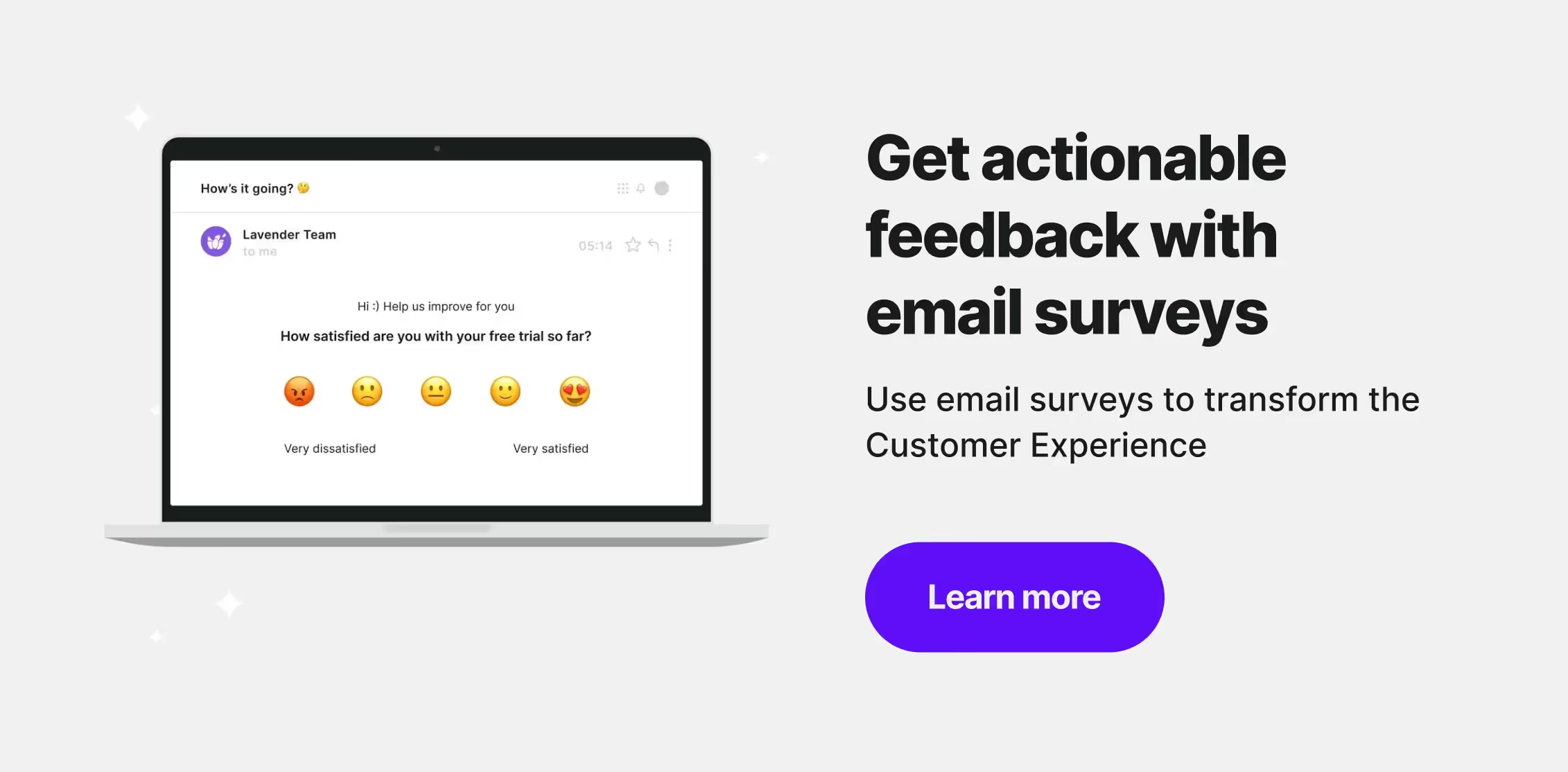
Why are surveys important?
One of the most effective ways to manage your online reputation is by understanding what customers feel right after they interact with your product.
There are many ways to gauge customer experience. You can do this by asking your customers directly through a text message, emailing them a survey, or implementing an exit survey on your website. Or, for example, ask customers about your website messaging using this survey template:
You can make sure that your customers understand your pricing with this simple question:
But the real long-term benefits go beyond just reputation. Integrating customer surveys into your operations can help to collect customer feedback and improve different aspects of your business.
In a world where 79% of customers put equal weight on online recommendations and word of mouth, it’s worth investing in good customer service and making sure that your online reputation is stellar.
Here are some things you can do today:
- Understanding pain points in your product or service: It’s not enough that you know your product by heart. Customers have a different take on your product or service, and knowing what they think can help you improve what you offer.
You can use the following survey template get this job done extremely quickly: - Establishing positive relationships with customers: Asking for their opinion lets customers know that their experiences have value. Having the ability to communicate with your brand openly can generate positive associations with the company, which helps establish brand loyalty.
- Generating more sales: 8 out of 10 purchases happen because of face-to-face recommendations. To make this happen, you have to make sure that customer feedback is generally positive, both offline and online.
- Creating a customer-centric culture: Customers won't just be aware of your product or service - they'll have an emotional connection with it. The more effort you’ll put into understanding customer needs, the better their experience will be.
One of the ways you can collect feedback with surveys is by asking your customers to give you details about themselves. You can then use those details to build a buyer persona. And all it takes to get started is this survey template:
Why are surveys ignored?
Customers just overlook emails
About 347 billion emails are sent every day and more than half of the world’s population uses an email service daily.
On top of work and personal emails, other companies are sending daily newsletters to your customers, and this can clog up their inboxes pretty quickly. This makes it easy for customers to neglect email surveys simply because they forget about them.
Poor subject line
It’s the small things that count, and that’s also true for subject lines. Shorter subject lines containing 30 or fewer characters have better open rates while personalized subject lines get 20% more opens. That's why is so important to learn how to create catchy email subject lines.
Your survey respondents don’t care enough
The average response rate for email surveys is about 30%. In situations where survey respondents don’t feel motivated enough or feel like the content isn’t personalized enough, the response rate can fall below 2%.
There is no incentive or a clear call to action
Many customers are unaware of the importance of the survey or its value to their experience. But even if they aren't particularly aware, they would like to be compensated for their efforts. Without providing an incentive such as exclusive rewards or discounts, customers may feel like they're wasting their time filling out the survey and quickly move on without submitting it. It’s not always the case but it might impact the actual completion rate within your audience.
How to send an effective follow-up survey
Unanswered customer surveys don’t have to be a dead-end. It’s perfectly reasonable for brands to send a follow-up email after no response has been recorded from the respondents.
Keep your email short and sweet. Instead of resending the same email and only changing the subject line to something like “ Follow-up Re: Survey,” whip up something more creative and engaging. Here’s how to do just that.
1. Create an attractive subject line
This is the first thing your customers will see, the one thing that separates your email from a dozen others. To increase your chances of getting noticed, create a subject line that promotes urgency, curiosity, and relevance.
One of the best examples is Zillow’s subject line: “ What Can You Afford?”.
The real estate agency immediately tells its audience that this content is for them.
It’s personal, relatable, and most importantly, helpful. This is the exact line home seekers are looking for.
2. Make their time count
Who wants to spend 5 to 10 minutes filling in a survey? After all, what’s in it for you?
One of the most foolproof ways to increase response rates is by introducing an incentive to the survey.
Perhaps you can offer the respondents an e-coupon or an exclusive discount. Whatever it is, it has to provide value in exchange for their time and input.
3. Let them know they matter
Be honest. Your clients are more likely to respond to surveys if they feel motivated to respond. And what better way to motivate your clients other than letting them know that their feedback matters?
Level with them and make them understand that their thoughts can have a significant impact on their user experience. And not only theirs, but “the entire community”, as Withings claims in the example below:
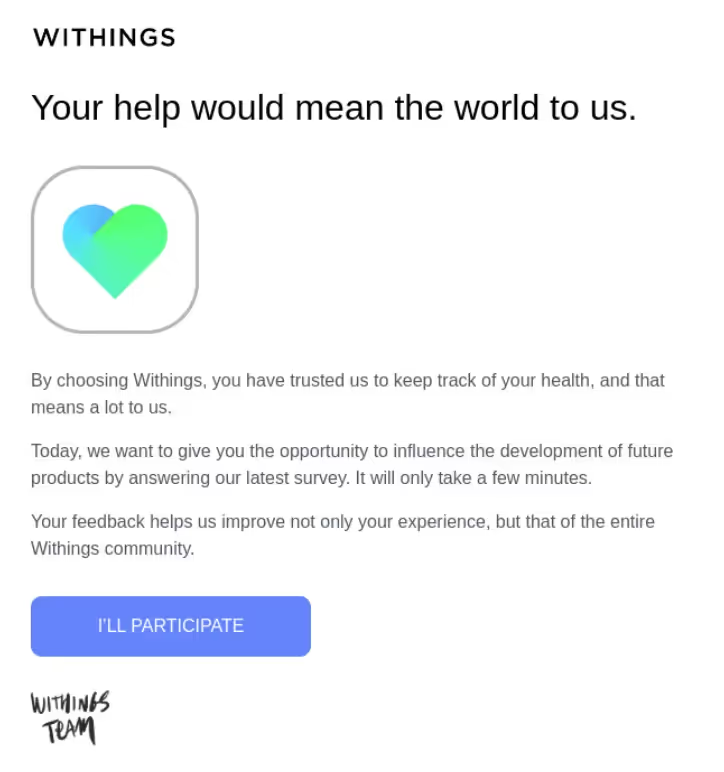
Here’s an example of a survey that you can send out to show customers that they matter:
4. Offer a shorter option
Maybe the problem isn’t the content but the format of your survey. Some people don’t have 15 minutes to spare, even when there’s a freebie waiting at the end of the survey.
Instead of resending the exact same email, design one that is easier to answer.
Here are some common survey mistakes:
- Having too many questions in one survey. Use only relevant questions. Divide long surveys into shorter series to make them more effective.
- Equating single-choice and multiple-choice questions. Make sure that your question format matches your respondents and your content.
- Forgoing the introduction. Let your survey respondents know what this is about. Use introductory lines like “The survey will be used to improve…”
- Including too many choices. If you’re doing a multiple-choice type of survey, make sure that you can still quantify the answers accordingly. Keep in mind that post-survey analysis won’t be as effective if your answers are muddled together.
- Sending the same survey to everyone. Different customers will be at different stages of your customer lifecycle. Segment surveys according to their phrases to make them more personalized and therefore effective.
- Poorly worded questions. Unclear and convoluted questions can lead to inaccurate or incomplete answers from customers.
5. Use a single question non-responder survey
Last but not least, if you are still wondering what to do with your follow-up email after no response has been made, get to the root of the problem: ask customers why they’re ignoring your surveys.
Don’t make it long, needy, and awkward; keep it short and sweet. You can send a multiple choice question such as: “I feel that the survey is... ”
- Pointless
- Ineffective
- Too long
With different answers, you get to understand what exactly needs to be improved in your surveys and use those to empower future campaigns. Instead of sending them another email, apply a more intimate approach.
If you have their contact details, try sending them a text message instead. Clients tend to prefer getting contacted at most twice a month by brands, and engaging with them directly gives you instant leverage over other brands.
You got survey responses. Now what?
You sent a follow-up email after no response was recorded in your first email.
Congratulations, it worked! What now?
Provide updates
Let your respondents know that their concerns have been accounted for. Send an email informing them how their response helped you improve your product or service. Having this will close the feedback loop, justify their time, and will improve their willingness to participate in future surveys.
Offer freebies
You promised them a discount, an exclusive offer, or a freebie. At the end of the survey period, make sure that you deliver on your promise. There is no better way to build brand loyalty than by staying true to your word.
Share results
Ensure your team is aware of the findings from customer surveys so that everyone understands how customers feel about your brand or product. Don’t show a set of data: show actionable conclusions instead.
Make the changes
This is the final and most important step that many businesses ignore: make the changes that the majority of your customers are asking for.
If too many are complaining about a certain feature in your product or service, then make the appropriate change and do it within a reasonable timeframe.
The longer you wait, the more your customers will think that your brand is all talk, no walk.
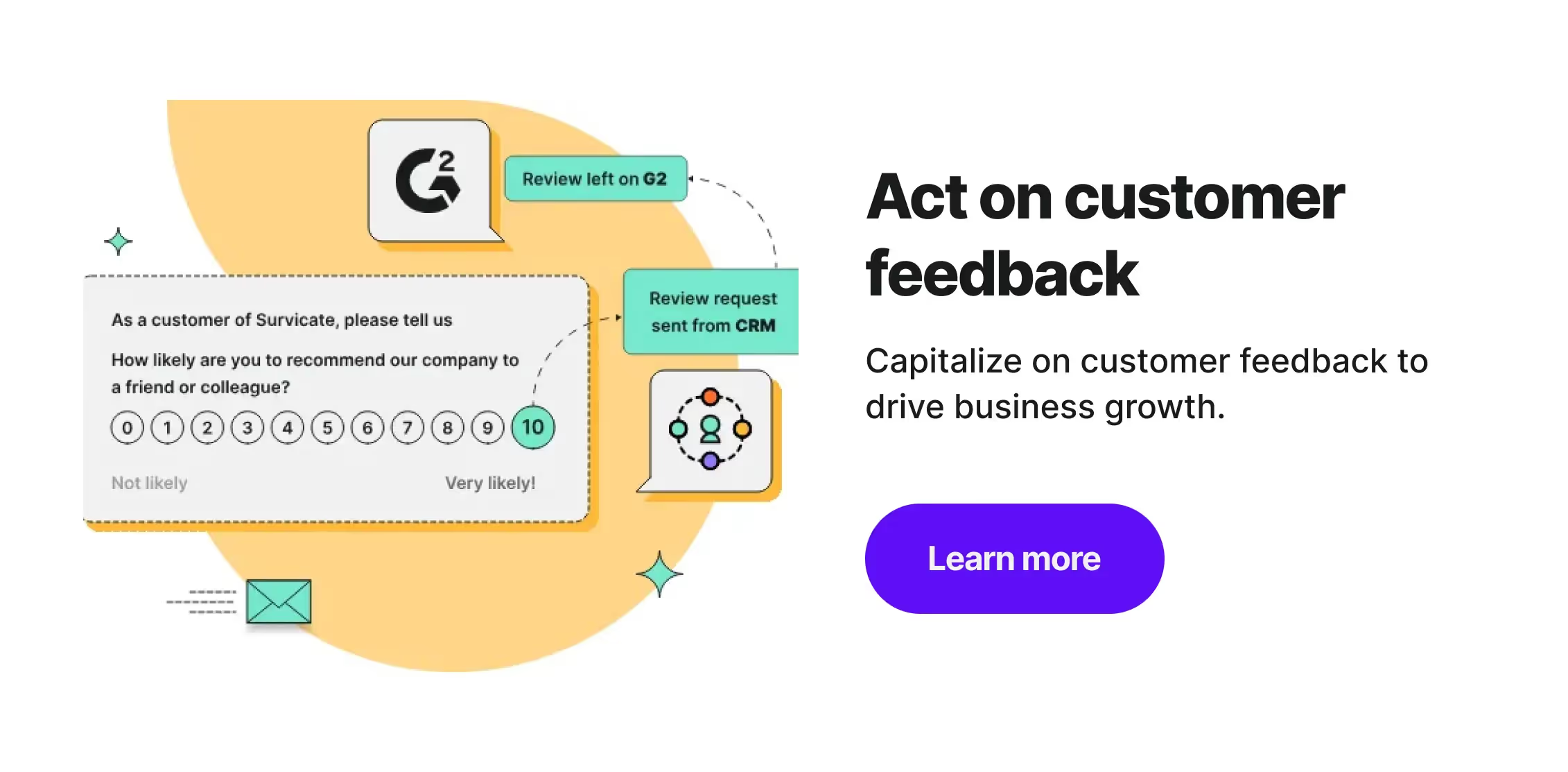
Unlock the power of customer surveys with Survicate
Do you want amazing survey completion rates even with just one email? You need the right combination of the survey tool and survey type. In Survicate, we have over 300 survey templates that you can use completely free. Just pick a template and start sending out surveys immediately.
And the best part is, you can integrate Survicate with your favorite email marketing tool so you can format and measure your email campaigns for the best effects. Sign up for our 10-day free trial and get access to all Best plan features today!

.avif)







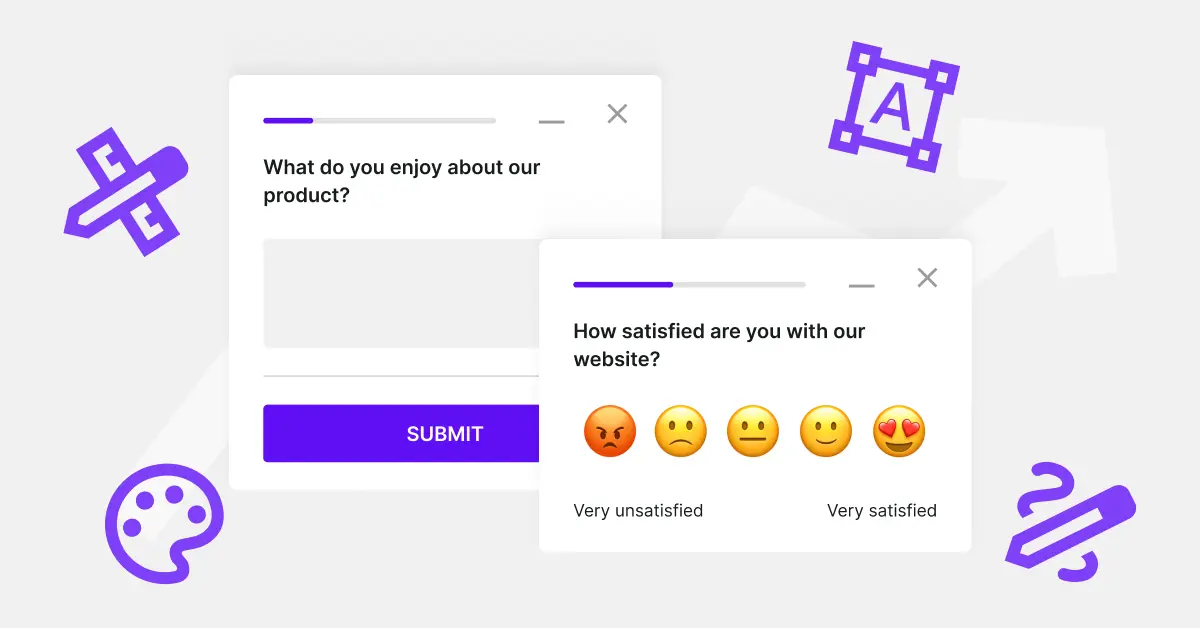
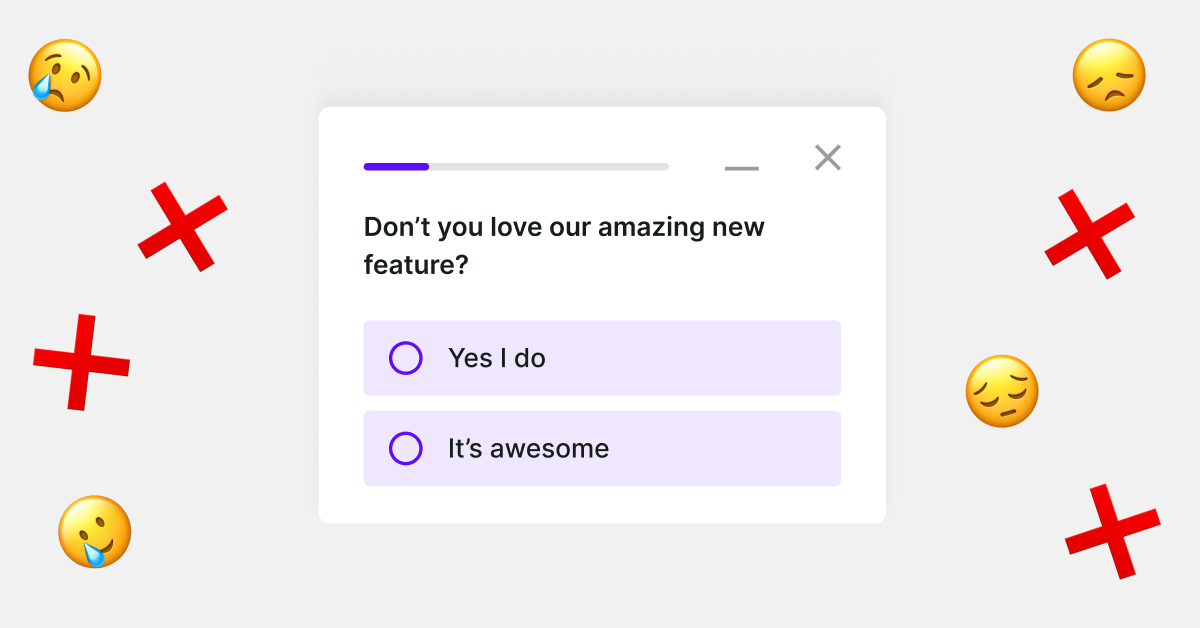
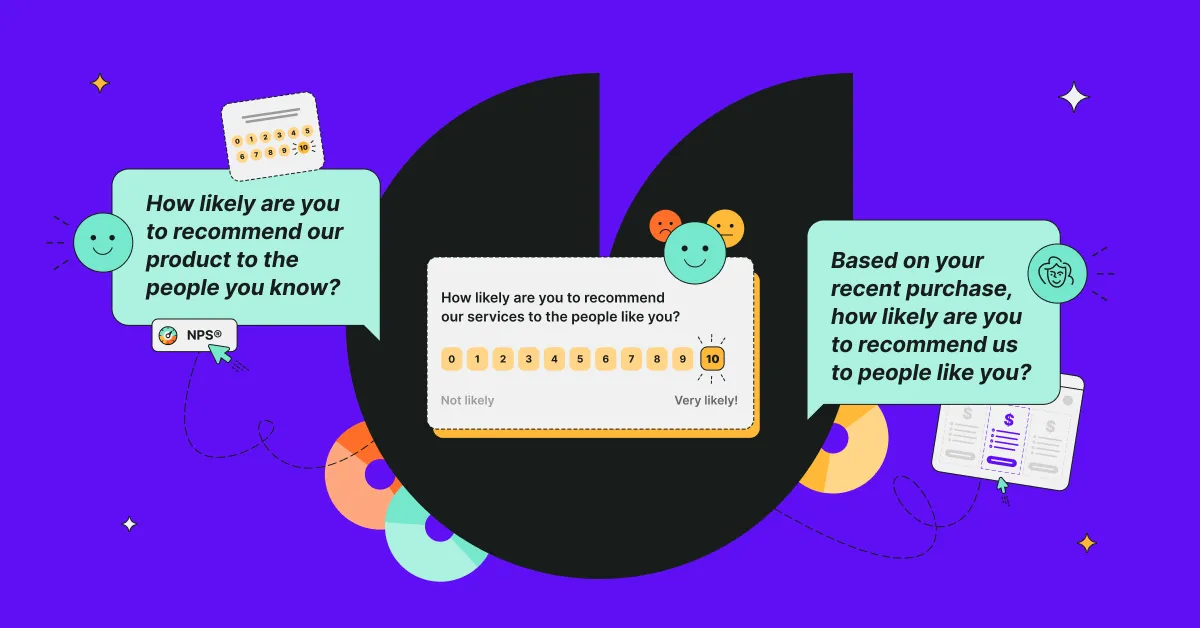
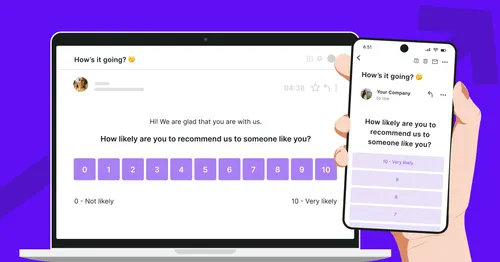
.svg)

.svg)



